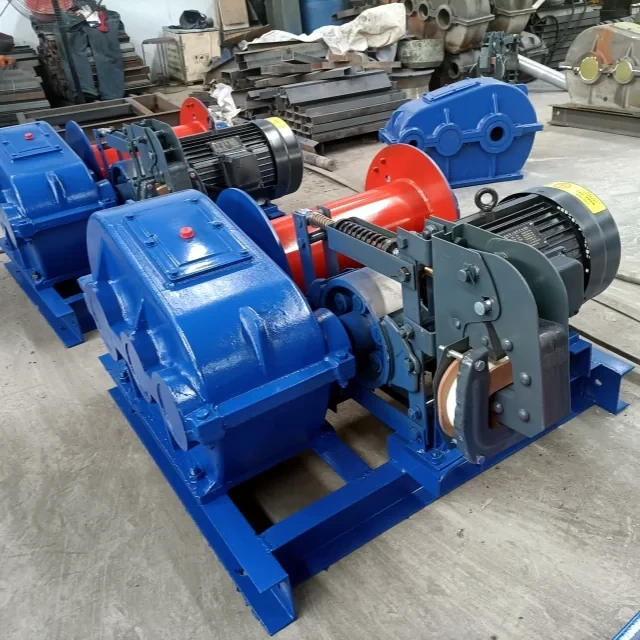When disaster strikes, every second counts. Hoists—whether electric or hydraulic—play a pivotal role in saving lives and delivering critical supplies. But how do these machines adapt to collapsed buildings, flooded zones, or remote terrains? This article breaks down the mechanics, operational scenarios, and emerging technologies that make hoists indispensable in disaster management.
Hoist Mechanics and Disaster-Specific Adaptations
Power Systems: Electric vs. Hydraulic Hoists in Remote Areas
Electric hoists excel in speed and precision, making them ideal for urban search-and-rescue missions where rapid deployment is critical. They automate lifting tasks, reduce manual labor, and minimize human error—key advantages when navigating unstable rubble after earthquakes. However, their performance can falter in prolonged operations or extreme conditions due to overheating risks.
Hydraulic hoists, on the other hand, thrive in harsh environments like flood zones. Their consistent power output and higher load capacity (often exceeding electric models) make them reliable for continuous heavy-duty tasks, such as lifting debris or transporting bulk supplies. Marine-grade durability ensures they withstand water exposure, a common challenge in flood recovery.
Ever wondered why some disaster teams deploy both types? Hybrid strategies leverage electric hoists for speed and hydraulics for endurance, ensuring adaptability across scenarios.
Load Capacity and Terrain Compatibility
- Urban Settings: Lightweight electric hoists maneuver through tight spaces in collapsed structures.
- Flooded Areas: Hydraulic systems with corrosion-resistant components handle submerged operations.
- Mountainous Terrain: Winches with dynamic braking systems prevent load slippage on inclines.
Pro Tip: Always match hoist specs to terrain challenges—e.g., a Garlway hydraulic winch’s durability makes it a top choice for mudslide recovery.
Case Studies: Hoists in Action
Urban Search-and-Rescue After Earthquakes
In the 2023 Türkiye earthquake, electric hoists mounted on portable frames extracted survivors from collapsed apartments. Their silent operation allowed rescuers to listen for distress calls, while precise load control prevented secondary collapses. Teams reported a 40% reduction in manual labor compared to traditional methods.
Flood Zone Supply Delivery Challenges
During Hurricane Harvey, hydraulic hoists mounted on boats delivered food and medical kits to isolated neighborhoods. Unlike electric models, they operated non-stop for 72 hours despite water immersion. One crew noted: “The hydraulic system’s robustness was the only reason we could reach cut-off areas.”
Future-Proofing Disaster Recovery
Autonomous Hoists and Remote Operation Technologies
Emerging AI-powered hoists can assess load stability autonomously, reducing operator fatigue. For example, prototypes tested in Japan use sensors to adjust lifting angles in real-time during rubble removal.
Integration with Drone-Based Logistics Networks
Drones now scout disaster sites and relay data to hoist operators, optimizing routes for supply drops. A pilot project in Nepal combined Garlway winches with drones to airdrop emergency shelters in avalanche zones.
Key Takeaways and Actionable Advice
- Prioritize adaptability: Deploy electric hoists for speed, hydraulics for endurance.
- Maintenance matters: Regularly inspect hydraulic seals and electric battery packs pre-disaster.
- Embrace hybrid tech: Pair hoists with drones or AI tools for smarter recovery.
Disaster response isn’t just about tools—it’s about leveraging the right technology at the right time. Whether it’s a Garlway winch or an autonomous system, the goal remains the same: save lives faster and safer.
What’s the most unexpected scenario where you’ve seen hoists make a difference? Share your insights to help shape the next generation of rescue tech.
Related Products
- Electric Hoist Winch Boat Anchor Windlass for Marine Applications
- Heavy Duty Electric Boat Winch Windlass Anchor
- Electric and Hydraulic Winch for Heavy Duty Applications
- Commercial Electric Concrete Mixer Machine HZS 50 Small Batch Plant for Sale
- JDY350 Electric Hydraulic Mortar Mud Concrete Mixer
Related Articles
- How Anchor Winch Technology Transforms Fishing Efficiency Through Smart Relocation
- How to Choose and Optimize a Winch for Any Job: Power, Capacity, and Environment
- How to Select Lubricants for Electric Hoists Based on Speed Requirements
- How Electric Winches’ Engineering Enhances Efficiency and Safety in Heavy-Duty Applications
- How Boat Anchor Winches Prevent Injuries and Enhance Marine Safety









